Get in touch
Contact Us
If you have any questions, need support, or want more information about our services and solutions, please don’t hesitate to contact us.
Get in Touch
Sentech, a state-owned company, is a leading provider of electronic communications network services to the country’s broadcasting and communications industry.
support@sentech.co.za
0860 736 832
060 062 5458
Address
Sender Technology Park, Octave Street, Honeydew
Postal
Sentech, Private Bag X06, Honeydew, 2040

Frequently Asked Questions (FAQs)
Find answers to common inquiries in our frequently asked questions section.
ASO stands for Analogue Switch-Off, which refers to the termination of an analogue TV transmission in the area in which you reside. Traditionally, you would receive normal TV like the SABC or ETV via an aerial connection directly to any TV. This technology is referred to as analogue TV reception from analogue transmitted television signals. With ASO, you can no longer receive television through traditional means. However, you need not worry; the analogue TV has now been replaced by a digital TV transmission. This advanced television technology will allow you to continue receiving television content.
Digital TV is the new, more advanced means of sending and receiving television, and it is happening worldwide, including in South Africa. You can receive digital TV from a Digital Terrestrial Television (DTT), land-based network, or a Direct-To-Home (DTH) satellite network. In order to receive this digital TV, you only need to connect a decoder or Set Top Box (STB) to your existing aerial and then to your existing television set. The digital television allows for the reception of many more TV channels at HD quality. The net result is more content with crystal clear quality. It also allows you to receive all the SABC’s 19 Radio stations.
DTT broadcast channels are transmitted by television towers spread across the country, typically on top of mountains and other high sites. Sometimes, the terrestrial/land signal cannot reach other areas because it is blocked by mountains and tall buildings, or there may be no DTT transmitter erected in the area. The result is that you will not be able to receive the DTT channels. However, do not despair because you will be able to receive your digital broadcasts via the satellite DTH network. For this, you may use your existing satellite dish for your satellite-based TV.
In order to receive these digital TV channels, you will need a digital decoder or what is sometimes called a Set Top Box (STB). This decoder is connected to your existing aerial and TV. The decoder will work with all kinds of existing TV sets, old and new, black and white or flatscreen.
- To receive from the DTT network, you will need a DTT decoder and an outdoor aerial must be installed.
- You will need a satellite DTH decoder to receive from the DTH satellite, and a satellite dish must be installed.
The digital signal, DTT and DTH, is available nationwide and is in operation. Digital channels from SABC and e.tv can be received in High Definition (HD), which is a high-quality crystal-clear signal. Most areas in the country can get a DTT signal coverage; therefore, you will need a DTT decoder and outdoor aerial installation. If you live in an area not covered by the DTT signal, you will need a DTH satellite decoder and dish installation. In general, only some rural areas, towns in the Square Kilometre Array (Northern Cape) and places surrounded by high mountains may not have DTT signal coverage – all other places generally have DTT signal coverage.
DSTV, OVHD and StarSat are already in digital format and are suitable for digital TV. You will continue to receive SABC and e.tv channels digitally. You will not lose your signal when the analogue network is switched off, and you don’t need any additional STB.
You can apply for a government-subsidized decoder at your nearest Post Office. In order to qualify for the government-subsidized decoder, you will need to present yourself at the nearest Post Office with the following requirements and documents:
- You must be a South African
- You need to earn a household income of less than R3 500.
- Visit your nearest South African Post Office branch to register for a government-subsidised STB with the following documents: ID, proof of residence and proof of income or affidavit.
You can watch all public channels from SABC and e.tv for free. There are also additional entertainment channels available with this decoder. There are no monthly subscription fees.
You can visit any of the retail stores, and you can purchase any of the existing decoders. Those are OVHD (OpenView HD), DSTV or StarSat. OVHD is free; you just need a decoder and dish installation, and no monthly subscriptions exist. StarSat and DSTV have monthly subscription fees and different viewing packages.
In the near future, other decoder models similar to the government-subsidized ones will be available in the stores, and they will not have monthly subscription fees.
Another new option now available is an Integrated Digital TV (sometimes called IDTV), which does not need a decoder. Most Smart TV’s are IDTV’s. For this TV, you don’t need an STB. You can connect your aerial straight to your IDTV set.
A Digital TV can receive free digital terrestrial television (DTT) broadcast channels without needing an external DTT decoder. You still need an outdoor DTT aerial connected directly to your new digital TV to receive the digital channels.
Generally, yes. Most of the smart TVs can display digital TV broadcasts. You must check or inquire about the TV specifications from the manufacturer’s website. If your TV specifications list a “DVB-T2” tuner, your smart TV is an IDl TV and can receive digital broadcast channels.
Smart TVs can also connect to the internet via wi-fi or ethernet cable. If you have a data connection, you can watch all internet-based video channels like YouTube, Netflix, ShowMax, SABC Plus and others.
Yes, all major retail stores and furniture shops sell Smart Digital TVs. Popular brands are LG, Samsung, Sinotec, Skyworth, JVC, AIM, Sony, Hisense, etc. Always check the specifications or ask the store salesperson if the TV has a digital or “DVB-T2” tuner. If the salesperson doesn’t know or is unsure, you can contact the manufacturer’s website or call their call centre for information.
In the near future, all Digital TVs will carry the “Go Digital” logo.
These TVs are now available from 32 inches upwards from most of the popular brands. Starting at 32 inches, starting prices typically range upwards from the R2500 range. Please inquire with your retail store. If you are buying a new TV, it is advisable to insist on a digital TV, but first, make sure your area has DTT signal coverage. In general, only some rural areas and places surrounded by high mountains may not have DTT signal coverage – all other places generally have DTT signal coverage.
A list of known digital TV models is available. Please also check with the manufacturer if your smart/digital TV does not appear on the list.
Generally, if you can or could receive analogue TV, you should be able to receive Digital TV. However, always make sure that the area you live in has a digital terrestrial network. Your local post office will be able to assist you with confirming whether you are staying in a DTT or DTH area. If there is no terrestrial digital coverage, you will still need a satellite decoder, even if your TV is a digital TV. Digital TVs can currently decode and display terrestrial signals only, not satellite signals. Suppose your digital TV has a satellite connection port. In that case, you will still need an additional module from the broadcasting service providers to fit into the back of your TV and decode the satellite signals. Broadcasters do not yet support this additional slot-in module but will do so in the near future.
Still have questions?
Contact us for further assistance.


